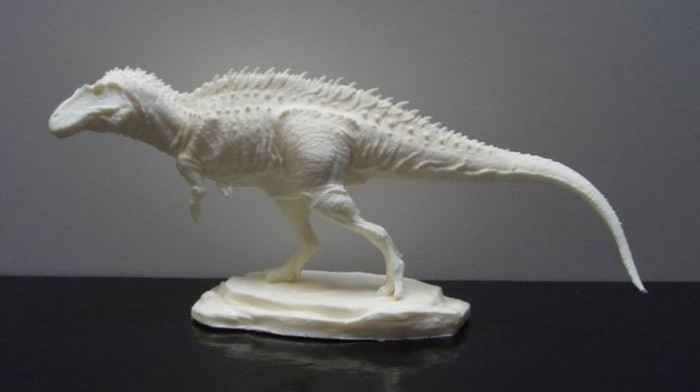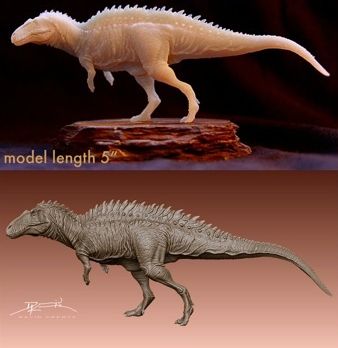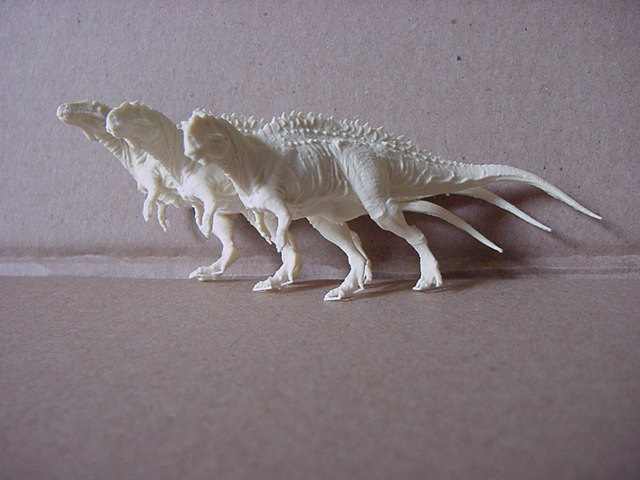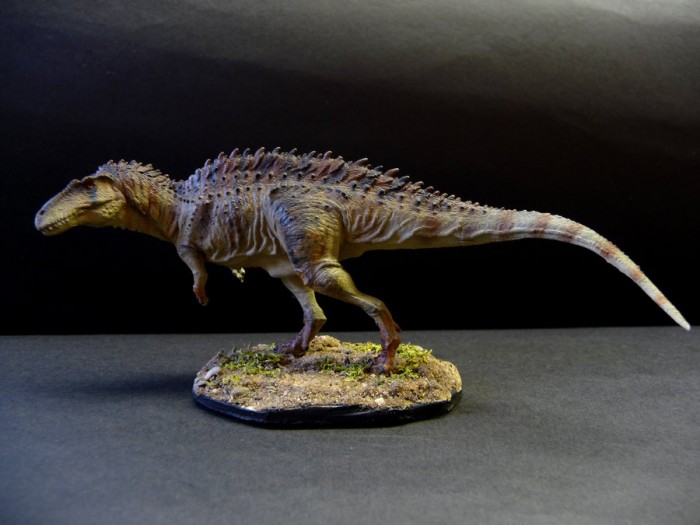As more species slip into mainstream consciousness, the ever-popular theropoda sees its previously obscure members slowly becoming household names. Nowhere is this more evident than Acrocanthosaurus atokensis, which has quickly soared to the popularity levels of Dilophosaurus and Spinosaurus. Alright, maybe ol’ Acro isn’t quite that popular – those two examples did have the dubious backing of Hollywood, after all. However, the Acrocanthosaurus did have the distinction of appearing in Bakker’s work of prehistoric narrative fiction, “Raptor Red.” The fact that this animal was one of the largest and most fearsome predators of its ecosystem probably doesn’t hurt, either.

One of the most famous sets of fossilized trackways suggests an Acrocanthosaurus leaping briefly onto the flank of a sauropod, a spectacle the likes of which would surely send any human mind reeling. One look at this reconstruction by the great David Krentz, and it’s pretty clear why some people think of the Acro as an “Allosaurus on steroids.” David crafted this piece in 2010, and it wouldn’t be a surprise if popular demand was a factor here. It is further distinguished as starting as a digital model (see below), which continued into David’s more recent 1:144 scale “Microsaur” line at Shapeways.

Like the other models in David’s 1:72 scale Antediluvian Collection, this piece comes with a custom base for attachment – just a bit of good glue is all you’ll need. The form-fitting footprints in each base actually make them pretty cool on their own, and each one is identified on the bottom for easy matching if you get them mixed up. Painting is entirely up to you, but some people enjoy the clean elegance of an unpainted resin figure. Some would liken this effect to a marble statue, so you could think of it as a slightly less embarrassing version of Michelangelo’s David, and it still has that “moment before the strike” quality to it.

Cleanup is fairly minimal at this size, typically removing bits of material between spikes or toes using a good knife. The natural ability of resin to hold a much sharper edge means you’ll want to think twice before letting the little ones go to town with these models; they are far too fragile to be considered toys after all, but the claws and tail tip could still give a scrape if mishandled. There are also a nice series of notches along the back, which emphasize the characteristic trait of the “high-spined” fellow. Vertical ridges line the maxilla as well, though it is unclear if these were intended as decorative touches or combat scars.

One does not see reconstructions of Acrocanthosaurus in the mass-produced figure range as often as expected. Hopefully this will change in the future, but even when it does, they will scarcely hold a candle to David Krentz’s magnificent rendition of the beast.
Disclaimer: links to Ebay and Amazon on the DinoToyBlog are affiliate links, so we make a small commission if you use them. Thanks for supporting us!




[…] Although David’s 1:72 scale Antediluvian series has been graced with a few exotic species, he’s giving plenty of love to the classics as well. His considerable talents often present the animal in a new and exciting light, such as the rare uplifted Stegosaurus or surprisingly common closed-jawed theropods. […]
Es una figura excelente el problema es ¿cuánto cuesta?
Figura muy bien hecha y muy realista.La versión pintada es excepcional.El cráneo se parece muchísimo al del Allosaurus.Un buen trabajo,en definitiva.
The North Carolina Museum of Natural Sciences has a dramatic and memorable Acrocanthosaurus display, which I know is what put the Acrocanthosaurus on my radar. I wonder if that’s true for other Acrocanthosaurus enthusiasts!
Another winner, of course.